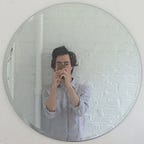This Is What Your Face Looks Like to Facebook
Artist Sterling Crispin’s “Data Masks” remind us the machines are always watching.
By Kyle Chayka
What:
Sterling Crispin’s “Data Masks” are haunting portraits that don’t actually depict any one person. Instead, they use raw data to show how technology perceives humanity. Reverse-engineered from surveillance face-recognition algorithms and then fed through Facebook’s face-detection software, the Data Masks “confront viewers with the realization that they’re being seen and watched basically all the time,” Crispin says.
How:
“Facebook actually makes masks out of everyone’s faces,” the artist explains. The social network analyzes every face that appears in photos on its servers and renders them into three-dimensional models. “It’s happening whether you get tagged in the photo or not,” Crispin says.
Crispin gathers face patterns from data sets sets like Labeled Faces in the Wild, then “evolves” a two-dimensional image from the composite, finally rendering it in 3-D — much like Facebook. He stops the iterative process before the algorithm has created a perfect face, resulting in the strange mutations of his images. The image, he says, might have “somebody’s eyebrow, somebody else’s chin.”
This face (below) is “like looking at a ghost; it’s very disturbing,” Crispin says. The algorithm came up with the Sphinx-like grin on its own.
“Some of them are less recognizable,” Crispin says. In the series, “a face-recognition algorithm would think it’s a face 99 percent of the time, but a person wouldn’t respond at all.”
Why:
As the U.S. government builds biometric databases like its Next-Generation Identification face-recognition system, it’s more important than ever to know how our identities are captured and processed by the technology we adopt. Crispin’s work is a reminder.
When we sacrifice our identities to machines, “the kind of softness, the part that’s really human, is lost in all of this,” Crispin says. With the strange visages of the masks, “you’re not looking at some foreign, abstract other that’s somehow outside of you; you’re looking at yourself.”
Follow Matter on Twitter | Like us on Facebook | Subscribe to our newsletter
